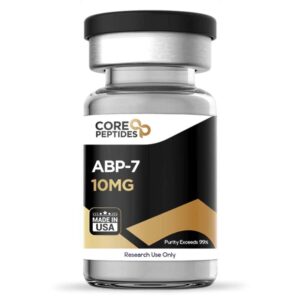Description
Melanotan 1 (MT-I / Afamelanotide) Peptide
Melanotan 1 is a synthetic peptide analog of the naturally occurring alpha-melanocyte-stimulating hormone (α-MSH). Structurally, it comprises 13 amino acids, identical to α-MSH, but differs by two amino acids: methionine and L-phenylalanine at positions 4 and 7 are substituted with norleucine and D-phenylalanine, respectively. These modifications are believed to enhance the peptide’s binding affinity, stability, and half-life, making it potentially more potent than the endogenous hormone.
Mechanism of Action
Melanotan 1 primarily exerts its effects by interacting with the melanocortin receptor (MCR) system, a family of G-protein coupled receptors (MC1R–MC5R) that regulate multiple physiological functions:
-
MC1R (Melanocytes): Stimulation increases eumelanin production, leading to pigmentation and potential photoprotection against UV radiation. Activation of MC1R triggers the cAMP signaling pathway, which upregulates microphthalmia-associated transcription factor (MITF), stimulating enzymes involved in melanogenesis.
-
MC2R (Adrenal Cortex): Potentially involved in cortisol production.
-
MC3R (Brain & Placenta): May influence appetite and energy homeostasis.
-
MC4R (CNS, Hypothalamus): Associated with sexual function, libido, and energy balance.
-
MC5R (Multiple tissues): Likely involved in exocrine processes, though its exact role remains under investigation.
Melanotan 1 exhibits particular specificity for MC1R, making it highly effective at stimulating melanin production and promoting skin pigmentation without exposure to UV radiation.
Research and Clinical Applications
-
Photoprotection and Skin Pigmentation:
Melanotan 1 enhances eumelanin synthesis, providing potential UV protection. Research indicates that treated subjects can tolerate longer sunlight exposure with reduced erythema and pain, suggesting utility in erythropoietic protoporphyria and other photosensitivity disorders. -
UV Radiation and DNA Repair:
MC1R activation by Melanotan 1 may stimulate nucleotide excision repair (NER) mechanisms, which help repair UV-induced DNA damage. This effect could reduce mutagenesis and contribute to skin health and cancer prevention research. -
Anti-inflammatory and Anti-fibrotic Potential:
Preclinical studies suggest Melanotan 1 may exert anti-inflammatory effects, potentially mitigating liver fibrosis by modulating matrix metalloproteinase (MMP) activity, reducing fibrogenic gene expression, and downregulating TGF-β1, collagen α1, α-SMA, and COX-2. These findings highlight potential applications in fibrotic disease research. -
Neuroendocrine and Systemic Effects:
While primarily studied for pigmentation, Melanotan 1 may have secondary effects via MC3R, MC4R, and MC5R, including appetite regulation, energy homeostasis, and sexual function modulation, though these effects are less explored.
Chemical Properties
-
Molecular Formula: C78H111N21O19
-
Molecular Weight: 1646.87 g/mol
-
Other Names: MT1, Afamelanotide
Conclusion
Melanotan 1 is a synthetic α-MSH analog designed to enhance eumelanin production, offering potential benefits in UV protection, skin pigmentation, and anti-inflammatory research. Its receptor specificity and prolonged half-life make it a valuable peptide for laboratory studies investigating melanocortin receptor pathways, photoprotection, and related physiological processes.
Note: Melanotan 1 is intended for research and laboratory purposes only. Users should review and adhere to all applicable safety protocols and regulatory requirements.





Reviews
There are no reviews yet.